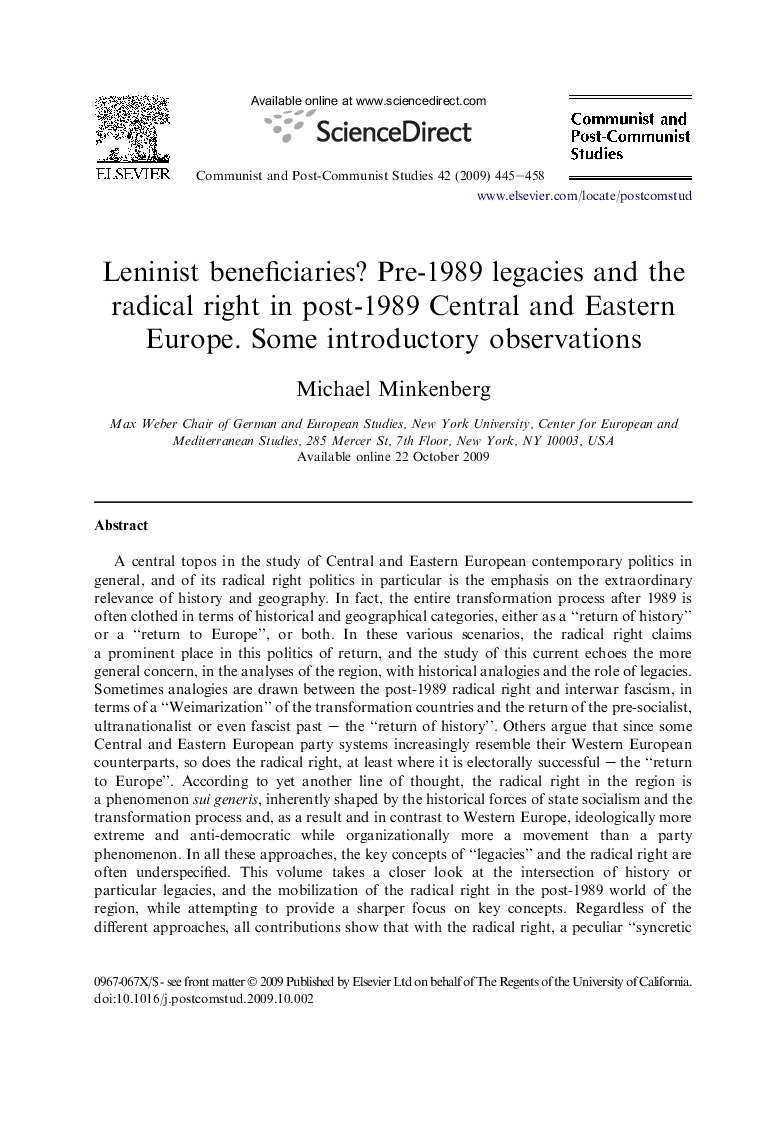| کد مقاله | کد نشریه | سال انتشار | مقاله انگلیسی | نسخه تمام متن |
|---|---|---|---|---|
| 1046542 | 945085 | 2009 | 14 صفحه PDF | دانلود رایگان |

A central topos in the study of Central and Eastern European contemporary politics in general, and of its radical right politics in particular is the emphasis on the extraordinary relevance of history and geography. In fact, the entire transformation process after 1989 is often clothed in terms of historical and geographical categories, either as a “return of history” or a “return to Europe”, or both. In these various scenarios, the radical right claims a prominent place in this politics of return, and the study of this current echoes the more general concern, in the analyses of the region, with historical analogies and the role of legacies. Sometimes analogies are drawn between the post-1989 radical right and interwar fascism, in terms of a “Weimarization” of the transformation countries and the return of the pre-socialist, ultranationalist or even fascist past – the “return of history”. Others argue that since some Central and Eastern European party systems increasingly resemble their Western European counterparts, so does the radical right, at least where it is electorally successful – the “return to Europe”. According to yet another line of thought, the radical right in the region is a phenomenon sui generis, inherently shaped by the historical forces of state socialism and the transformation process and, as a result and in contrast to Western Europe, ideologically more extreme and anti-democratic while organizationally more a movement than a party phenomenon. In all these approaches, the key concepts of “legacies” and the radical right are often underspecified. This volume takes a closer look at the intersection of history or particular legacies, and the mobilization of the radical right in the post-1989 world of the region, while attempting to provide a sharper focus on key concepts. Regardless of the different approaches, all contributions show that with the radical right, a peculiar “syncretic construct” (Tismaneanu) has emerged in Central and Eastern Europe after 1989, which is derived from both pre-communist and communist legacies.
Journal: Communist and Post-Communist Studies - Volume 42, Issue 4, December 2009, Pages 445–458